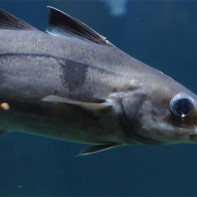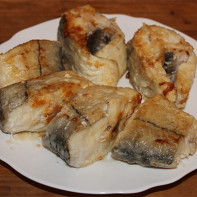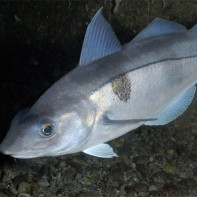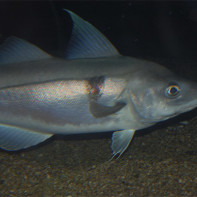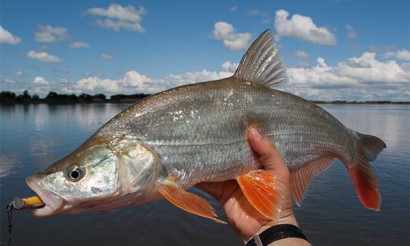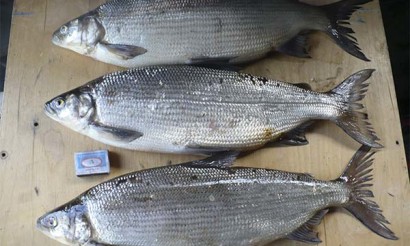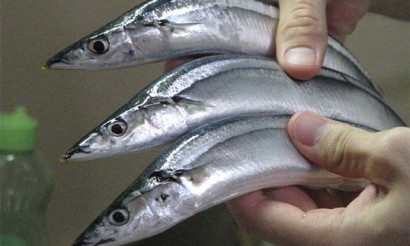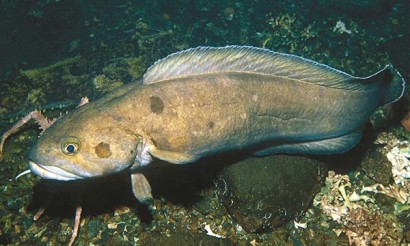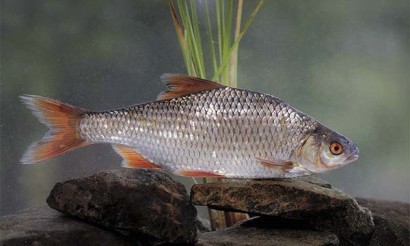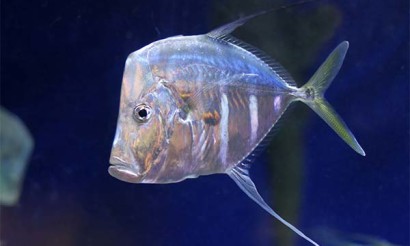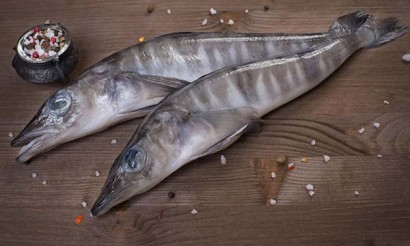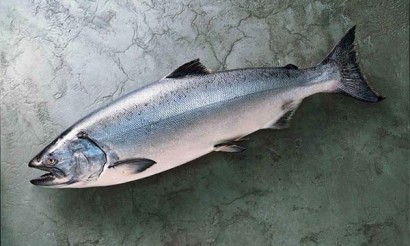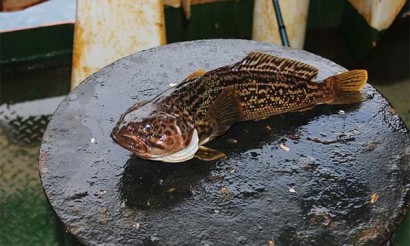Haddock: what kind of fish, useful properties, recipes for cooking
Positive and negative qualities of such a representative of the aquatic environment, as haddock, have long been studied. This fish belongs to the Cod family. In North American and European countries, this species is very popular. In these regions, it is the third most consumed species. The first and second places in this rating belong to cod and mint, respectively. The great popularity of this product is due not only to its taste characteristics, but also to a mass of useful characteristics.
- Haddock: what kind of fish, how it looks and where it is found
- What is the difference between haddock and cod?
- Which is healthier
- Composition and calories
- What is the usefulness of haddock fish?
- General benefits
- For Women
- For Men
- In Pregnancy
- For breastfeeding
- For children
- For weight loss
- In pancreatitis.
- Harm and Contraindications
- How to choose and store
- How to clean haddock fish
- How to cook haddock delicious: Recipes
- In the oven
- In the frying pan
- In a multicooker
- In the steam cooker
- On the grill
- What to cook with haddock: Recipes
- Cutlets
- Soup
- Casserole
- Interesting Facts
haddock: what kind of fish, how does it look and where does it live?

The haddock is a representative of the Codfish, which is found in the seas of the Atlantic and Arctic Oceans. This aquatic inhabitant is about 0.6 m long, and the average individual weighs 3 kg. The fish is distinguished by the presence of stripes on the sides that run from the head to the middle of the tail, has a dark gray body and a silvery belly. The meat is characterized by its white color. The fish is carnivorous and uses shellfish, sea urchins, fish roe, worms and crabs as food.
What is the difference between haddock and cod?
These individuals belong to the same family. They differ in their soft white fillets, and their sizes are about the same. But we do know a few methods to distinguish haddock from cod cod ..
- First of all, you should study the stripes of fish on the sides. If these stripes are silvery, it means that it is a cod, and the presence of dark color indicates that it is haddock.
- Another distinctive feature of haddock is the dark spot under the fin.
- The difference between these two species of fish is also in the tail. The haddock's tail is somewhat concave inward, while the cod's is flatter.
- The scales of the cod have a greenish tint, while those of the competitor have a silvery tint.
- Haddock tends to live deeper than cod, which is why the latter is fished more often.
- The structure of cod meat is softer and juicier, while haddock is characterized by a somewhat dry and tough fillet.
- With haddock there are many more recipes for cooking various dishes. Her meat can be combined with any sauces and garnishes.
What's healthier
We are talking about representatives of the same family, they are similar in appearance, although there are some differences. Since they are related fish, then their properties are almost the same. To understand what kind of fish is more useful, it is necessary to study the chemical composition. Both varieties are considered to be dietary foods, but it is haddock that contains more valuable properties, macro-and micronutrients. Thus, this fish contains more iodine, which ensures the normal functioning of the thyroid gland. Their caloric content is about the same, about 70 calories per 100 grams.
As for the taste, here, basically, we should be guided by the preferences of an individual and the method of cooking such a product. Still, it is believed that cod is more finicky, therefore, there are far fewer recipes with its use than with haddock, which is delicious in any form and under any sauce.
Composition and calories
In the composition of haddock a lot of mineral compounds are found. Thus, of the trace elements in it are present:
- Iron, which is necessary for the normal functioning of the body, a component of cell protoplasm, hemoglobin.
- Bromine, which stabilizes the work of the CNS, sex glands, takes part in carbohydrate, fat and protein metabolism.
- Zinc is an antioxidant and participates in the process of tissue renewal; it is also a component of certain enzymes that have a beneficial effect on metabolic processes in the body.
- Sodium, required for normal functioning of the NS and the muscular system; it is also an essential element of the water-salt balance in the body.
- Iodine, which affects overall health, is responsible for mental activity.
- Copper is a compound necessary for the metabolic process and the synthesis of hemoglobin.
- Fluorine, which takes part in the development of dental and bone tissue.
In addition, haddock contains many vitamins, such as niacin, retinol, tocopherol, thiamine, riboflavin, ascorbic acid.
- Vitamin PP or niacin plays an important role in blood circulation, ensures the health of the heart, participates in the transformation of glucose and fat into energy, regulates cholesterol levels in the body.
- Vitamin A regulates metabolic processes, ensures the formation of bone and dental system, promotes the growth of new cells, slows the aging process, fights infections, contributes to the good functioning of visual organs, is necessary for the prevention of cancer.
- Vitamin E is responsible for blood circulation in the body and its clotting, promotes rapid healing of wounds, strengthens vascular walls, useful for muscles and nerve fibers, has a rejuvenating effect.
- Vitamin C is characterized by antioxidant properties, copes with the effects of stress, strengthens the body's defenses.
- B-group vitamins are known for their beneficial effects on the nervous system, metabolism, moreover, they ensure the flow of oxygen to the cells, a positive effect on the mucous membrane of the digestive tract.
The caloric value of the product is 70 kcal. This figure varies depending on how it is processed.
What is the usefulness of haddock fish
General health benefits
Among the useful qualities of haddock can be distinguished the ability to take part in the production of protein, strengthen the tooth enamel and bone system, regulate the metabolism of amino acids, protect the body from pathogenic microbes and infectious agents. This product is also a preventive agent against cancer. Haddock regulates visual function, accelerates the healing process of damaged dermis, gives elasticity and elasticity to blood vessels.
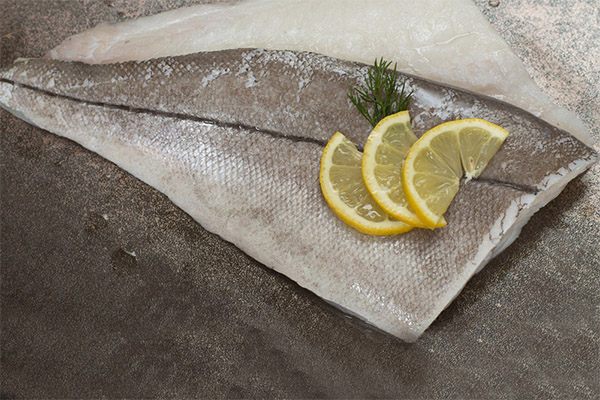
Haddock contains another important substance for health - selenium. It is believed that regular intake of this element in the body has a cumulative character. This compound regulates metabolic processes, as well as adjusts the work of the brain.
Haddock is also good for the CNS, because it contains vitamins and other substances that have a positive effect on the nerve cells. Frequent stress, overwork have a negative impact on the psycho-emotional state of a person. This product will make up for the lack of such substances, which leads to strengthen nerves and improve overall health.
It is known that fish products are high in omega-3 fats. And few people know that such components help reduce the pain of arthritis. In addition, these compounds are characterized by the ability to reduce the cholesterol level in blood and ensure the normal formation of the baby during pregnancy.
All mineral compounds present in haddock strengthen bones and regulate blood pressure.
Potassium in the seafood has a positive effect on the heart, and iodine is indispensable for thyroid activity and maintaining a strong immune system.
For women
Representatives of the weaker sex can safely include this ingredient in their diet. It has easily digestible protein, therefore, haddock fish fillets are excellent for dietary diets. In addition, the product helps to activate metabolic processes, which is also important when it is necessary to get rid of extra pounds.
Haddock is also useful for women because it slows the aging process, reduces the effects of stress and worries and strengthens the immune system. In addition, the fish helps to increase hemoglobin levels, which is deficient in most women.
In addition, haddock is useful because of the presence of omega-3 fatty acids, which restore the beauty and health of hair and nails, as well as ensure the proper functioning of internal organs.
For men
Haddock should be present in the menu of the stronger half of mankind. Since men most often suffer from cardiovascular problems, fish can help them control their cholesterol levels as well as their circulation.
This fish is high in protein and low in fat, so it is good for athletes.
Pregnancy
Pikefish is of great benefit to girls who are waiting for the replenishment. The rich vitamin and mineral composition will make up for the lack of valuable substances and will have a positive effect on the body of the future child and pregnant woman.
Due to the presence of polyunsaturated fats and iodine, experts recommend including dishes based on haddock in the diet of future mothers.
When breastfeeding
During lactation, doctors recommend consuming dishes of haddock, as this is a reliable way to give your baby the right amount of iodine, so necessary for the healthy formation of the child's immune system.
For kids
Like any other seafood, haddock can be included in children's diet only after a child reaches the age of three. This meat ensures the development of the bone system and immunity. If a child eats haddock regularly, there will be no need to introduce fish oil into the baby's body by medicinal methods.
In order not to face unpleasant consequences, it is recommended to consult a specialist beforehand.
When losing weight.
The low caloric content and high concentration of protein makes it possible to use haddock in the diet of people who are struggling with excessive weight.
The dietary product is characterized by the ability to dissolve "bad" cholesterol in the body and strengthen the cardiovascular system.
Of course, fish fillet can not be used as a dish for a mono-diet, as it does not contain the entire necessary complex of substances. But still make up for the lack of certain compounds haddock will help.
For pancreatitis
With inflammation of the pancreas, the usual way of life changes. In this case, it is necessary to refuse most of the favorite dishes and drinks, as well as to change the way of heat treatment of a number of products. Pancreatitis leads to the fact that under the ban fall under the ban salty, fatty and fried foods. If the disease occurs for the first time, with the right therapy it is possible to return to the normal diet to which a person is accustomed. The main thing is to observe moderation and not to overeat.
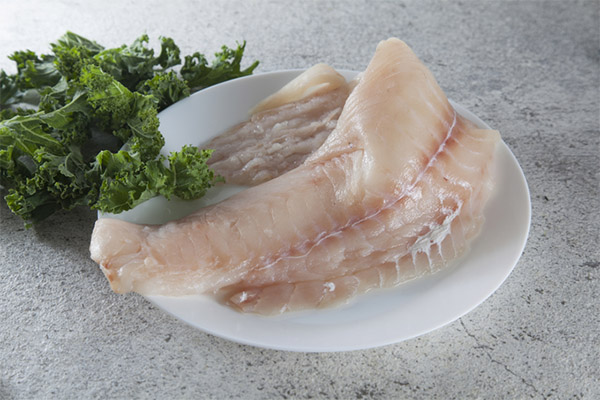
The inclusion of fish products is part of a healthy diet. Fish and seafood, due to their high content of omega acids, help normalize blood cholesterol levels. This provides natural regulation of the metabolic process in the body.
Fish is a product rich in easily digestible protein. Moreover, it contains such substance as selenium, which is known to protect the organism from hazardous environmental factors.
Fish oil is also indispensable for the health of the digestive tract, as it is much easier to digest than animal fats. Patients suffering from pancreatitis need to be careful in this regard.
Specialists recommend to include in the diet in case of pancreatic diseases only low-fat varieties of fish. At the same time the fat content of such products should not exceed 0.9 percent. Piksha is a saltwater fish, which is allowed for use in this disease.
When cooking haddock dishes, it is best to give preference to boiled fish, steamed minced meat cutlets. It is contraindicated to use smoked, canned and fried haddock in food, otherwise it will lead to exacerbation of pancreatitis.
Harms and contraindications
Despite the fact that haddock is endowed with many useful qualities, it can also harm the body (especially those who suffer from an allergic reaction to seafood). In this case, anaphylactic shock can occur due to the protein contained in the fish. Moreover, such allergy may cause exacerbation even of chronic pathologies which were in remission.
Individual intolerance to fish products is a rare but still frequent occurrence.
Another possible danger of haddock is its ability to accumulate salts of heavy metals in the body. That is why you should buy this delicacy only in a trusted store. The seller is obliged to present documents confirming the quality of the product.
How to choose and store
- To begin with, it should be noted that fresh fish should have a marine odor. You should also pay attention to the eyes of the sea creature. So, if they are cloudy, it is better to refuse to buy, because it is stale. If the eyes are bright, it indicates that the fish was caught relatively recently.
- The gills of the fish should also be light and firm, and the area around them should not be cloudy. The presence of a yellowish tint indicates improper storage and transportation.
- The body of the haddock should not have any damage or dents.
- If the fins look dried out, it means the fish has been frozen several times.
Fish can stay in the freezer for several months. Fresh and chilled carcasses must be used immediately, as they spoil very quickly. Store fresh fish on the bottom shelf of the refrigerator for no more than two days. If the fish is defrosted, re-freezing is prohibited, otherwise the product will lose all its valuable properties. After defrosting the haddock is stored for no more than 10-12 hours.
How to clean haddock fish
Today in stores there is a huge selection of sea and river fish, and they are sold both cleaned, in the form of fillets, and whole. Some people prefer to buy a whole fish. To cut it into fillets, you must first clean the carcass of scales.
Piksha has a fairly small scales. To quickly and easily remove it, you need to firmly hold the fish with one hand over the tail of the sink or some container and pour it with boiling water from a kettle. As a result of such manipulation, all the scales will stand on end. This will make it easy to remove them with your fingers. In addition, the skin will remain intact, because many people eat fish with the skin, especially in a fried form. This procedure keeps the kitchen clean. After all, the scales do not fly in all directions, which usually happens during cleaning with a knife.
When all the scales are removed, you need to cut off the head, remove the insides and wash the carcasses. Next, make a neat incision across the entire width over the backbone area, with the knife leading up to the tail. Such actions will lead to the formation of two halves, one of which will be with the backbone, and the other - without it. You will need to clean the filet that is without a backbone from small bones, and from the other part - cut off the backbone. Also you need to remove the side fin bones.
After that, you should remove the dark film from the inside of the belly. Now all that remains is to check the cleaned fillet once again for small bones and if present, remove them with tweezers.
How to cook haddock well: Recipes
This fish goes well with vegetables, citrus fruits, olives and cheese. It is often eaten with herbs and various kinds of spices, combined with other seafood, for example shellfish. However, fish also goes well with potatoes and legumes.

From this fish can be prepared a variety of dishes using a variety of methods. Pike-perch is a low-calorie, so most often it is baked or pan-fried, if it is not a diet diet meal.
Especially delicious is the fish baked in foil, so it is definitely recommended to use this method of cooking.
In the oven
Much tastier haddock turns out when cooking it in the oven. In this case, it can be cooked simply in a mold, wrapped in foil or placed in a sleeve, add vegetables or other products. The simplest recipe is to send the marinaded fish meat together with the marinade to the heated oven for half an hour.
To get such a dish, you will need 1 g of haddock meat, 150 ml of vegetable oil, 40 ml of raspberry vinegar, the same amount of soy sauce, several garlic cloves, spices for fish, bay leaf, pepper and salt.
The cooking process begins by rubbing the garlic with salt and spices. After that, pour the oil, vinegar and soy-based sauce. With the resulting mass rubbed fish and leave it to marinate for 40 minutes in a cold place, covered with a lid. During this time, stir the fish mixture regularly.
Next, transfer the pieces of fillet to a baking tray along with the marinade. Now add the bayroot, black pepper and send the preparation to the oven heated to 180 degrees. The dish will be ready in 25-30 minutes.
In the pan
The recipe for pan fried haddock is very simple. This does not require any special skills and abilities in the culinary field. You can fry both pieces of fillet and split into two pieces of fish. In addition to the classic spices in the form of salt and black pepper, you can use a mixture of seasonings designed for fish dishes, as well as dried herbs.
So, you need 1 kg of fish, a glass of flour, 1 lemon, 0.5 cups of vegetable oil and spices. Portion slices of haddock should be salted and peppered, adding other spices, if necessary. After that, roll the fish in flour, and then send it to a preheated frying pan. Fry the slices on both sides until golden brown. If the slices are large, after a slight browning, it is recommended to cook under a lid on low heat. Serve such a dish with slices of citrus.
In the multicooker
It is quite easy and simple to prepare dishes using a multicooker. It is also recommended to cook the haddock in this way. For example, you can fry the fish fillets for 10 minutes on both sides, using the function "Bake". In this case it is necessary to season the haddock to taste. You can also cook the dish in a sauce with the addition of vegetables. For this you need 500 g of haddock meat, 2 onions, 2-3 carrots, a couple of tomatoes, 2 tbsp of ketchup and mayonnaise, 300 ml of water, 1 tbsp of vegetable oil, spices and herbs.
The cooking process starts with frying vegetables. Grate the carrots on a grater, and cut the onions in half rings. In this form, send these two components to the bowl of a multicooker with heated oil. Cook the vegetables in the mode "Baking" for 10-15 minutes. On top of the fried carrots and onions lay the fish fillet.
Next, prepare the sauce. To do this, mix mayonnaise with ketchup and water with selected seasonings. Pour the contents of the bowl with this mixture. After that, stew the dish for 40 minutes. In this case, you need to turn on the appropriate function.
In the steamer
If it is necessary to prepare dietary food, you can use a steamer. This method of processing fish will allow you to get a delicious and at the same time healthy dish. In this case, you can add seasonings at your discretion. It is best to marinate the meat of fish first. For example, you can season the haddock slices for 15 minutes in a brine of olives.
So, for haddock steamed requires 500 g of fish fillets, 40 ml of olive brine and oil based on them, half an onion and 2 bay leaves.
To start, you need to marinate the fish in olive brine. After 15 minutes, oil the fish fillet. In this form, place it on the grate of the device. Place onion rings and bay leaves on top of the haddock. It takes 30-40 minutes to cook haddock in the steamer, it all depends on the thickness of each piece of fish.
On the grill
Interestingly, you can even cook haddock on a kebab. In this case, the following ingredients will be required: 0.7 kg of fish meat, a few onions, 80 ml of sunflower oil, one lemon, as well as salt and ground pepper to taste.
First, you need to squeeze the juice of the lemon. Next, cut the fillets into slices, put them in an enameled container and pour the lemon squeeze over them. After that, mince the onion and the citrus zest through a meat grinder, add the oil. With the resulting marinade pour the fish and put in the refrigerator for a couple of hours. At the end of two hours, salt and pepper the fish, thread it on skewers and grill until it turns brown. During grilling it is recommended to smear pieces of fish with the rest of the marinade.
What can be cooked from haddock: recipes
There are many recipes for cooking dishes based on haddock. If all the rules are followed and the tips are correctly followed, the food from such fish turns out delicious, juicy and very appetizing. Along with this, such dishes have significant nutritional characteristics. Pike-perch has health benefits, as it has a rich vitamin and mineral composition. This means that the dishes from this seafood are just as useful. They are recommended for use in various diseases, in particular in pathologies of the gastrointestinal tract.
Cutlets
If fresh haddock is available, it can be used to prepare delicious, healthy cutlets. Below will be a recipe for fish cutlets. If desired, such minced meat can be supplemented with roasted carrots, herbs or seasonings, everything depends on personal preferences.
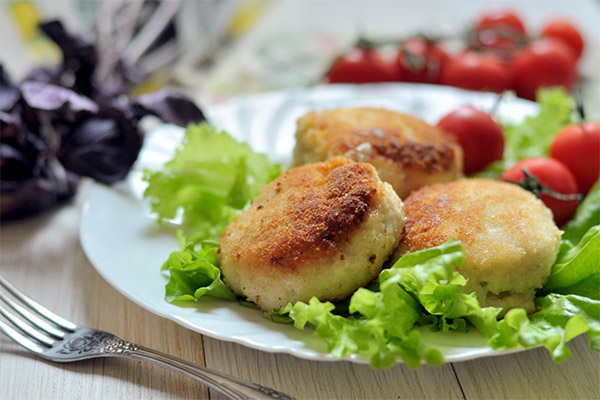
Of the ingredients you need to prepare 1 kg of fish fillet, 2 onions, a few cloves of garlic, 2 chicken eggs, 2 slices of bread, which should be soaked in milk, 150 g of flour, 100 ml of sunflower oil, salt and ground pepper to taste.
First, mince haddock, onion with garlic and soaked bread through a meat grinder. In the resulting mass add the egg and spices. The resulting minced meat should be thoroughly mixed and beaten a little. Now form cutlets from this mixture, roll them in flour and fry in a pan in heated vegetable oil on both sides until tender.
Soup
Pike-perch is excellent for a first course as well. In this case, it is best to use it as a whole, together with the tail and head, as in this case the broth will be more robust. But if there is only peeled fillet available, it can also be used for this purpose. The fish should be cut into pieces so that it easily fits into the pan used.
The soup consists of one fish, 2 onions, 2 carrots, 700 g of potatoes, a pinch of coriander, dried spices, 2 tablespoons of oil, bay leaf, herbs and salt and pepper.
First, you should prepare haddock and boil it with 1 onion and 1 carrot for half an hour. After that, take out the vegetables from the pot and throw them away, and clean the fish from bones. It is recommended to strain the broth. Next, include potatoes in the liquid base, and after 10 minutes, add the remaining onions and carrots, which have been pre-passed. After that, season the soup with the above spices and cook for another 15 minutes. After turning off the stove, add the greens, then let the dish infuse for some time under the lid and only then serve to the table.
Zalivnaya
Ingredients: 800 g fish, 1 l of water, 10 g gelatin, 1 onion, 1 carrot, 1 lemon, 6 quail eggs, a few sprigs of parsley, peppercorns and spices.
The cooking process starts with cooking a strong fish broth. The fish should first be thoroughly washed, put into a saucepan, pour water on it and bring to a boil. It is important to constantly skim off the foam. At this stage add whole vegetables and spices. On low heat cook the mass for at least 40 minutes. After that, filter the broth and salt it.
Take the ready meat out of the water, cut into small slices and sprinkle with lemon juice. Then measure 500 ml of broth. Boil quail eggs and peel them.
Then pour 100 ml of fish broth in gelatin, dissolve in a steam bath and add to the base for the jam. Pour the broth with gelatin into small molds. The layer of liquid should not be more than 5 mm. You need to let the mass harden in the fridge. After that, put the egg halves and chopped greens on the resulting jelly.
Put the fish fillet on the eggs, pour the broth all the way through and leave in a cold place for several hours. Before serving, dip the bottom of the mold into the hot liquid and tip onto a plate. Serve with horseradish.
Interesting Facts
- The largest haddock was 1.12 m in length, given that its weight was 17 kg.
- Juveniles make very long migration routes, which is not characteristic of adult fish.
- Spawning takes place from early January for six months.
- Females can lay up to 3 million eggs over the entire season.
«Important: All information on this site is provided for informational purposes only purposes only. Ask for advice before applying any recommendations. specialist before applying any recommendations. Neither the editors nor the authors shall be liable for any possible harm caused by materials."

